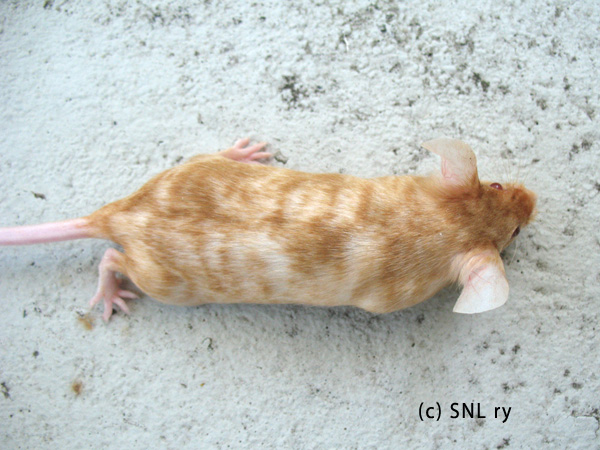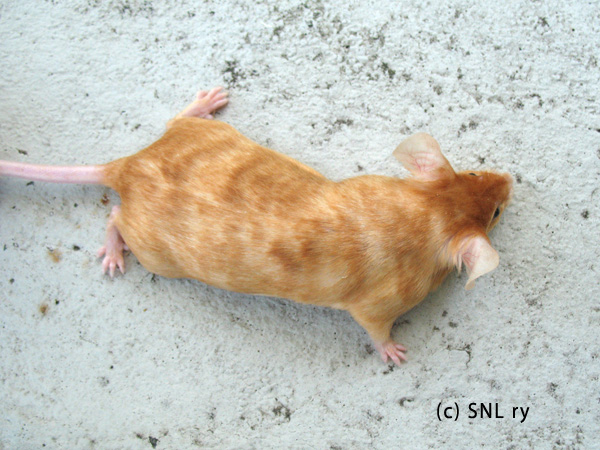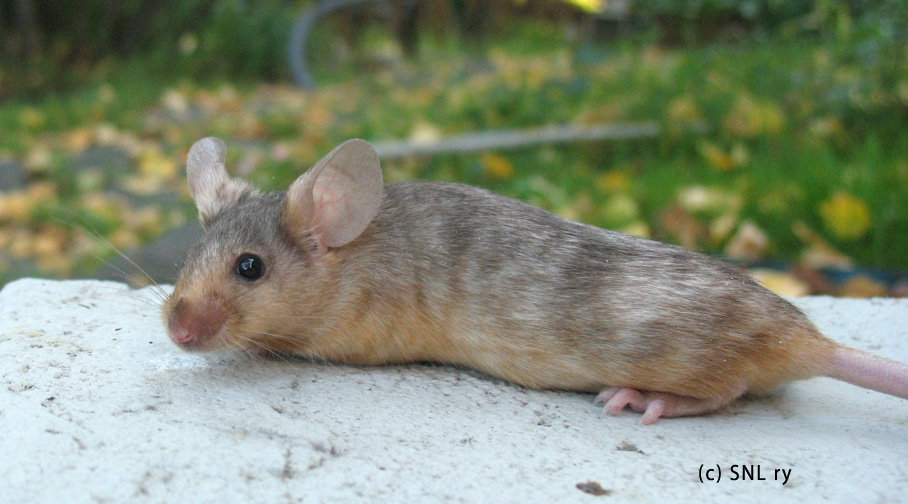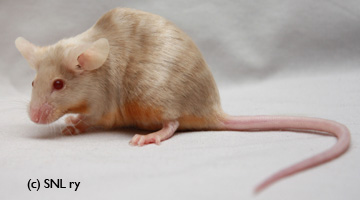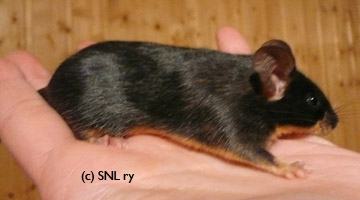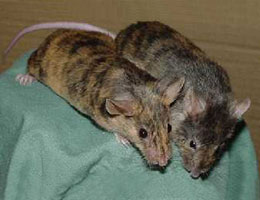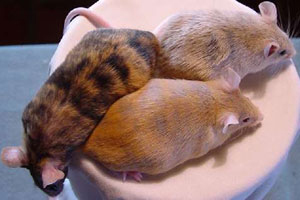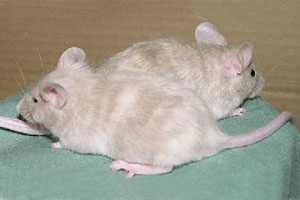Varieties
Marked
Brindle (*/bri)
Mobr/- (sex-linked), or
Avy/* (striping on red background), or
Ahvy/* (striping on red background), or
am/am (striping on black background)
"The brindle mouse shall have diluted stripes, streaks and numerous little areas over a standard colour background.These markings shall be evenly distributed over the mouse including the face and belly. Large blotches of solid colour or white background to be considered a fault. Central demarcation lines along spine, face and belly permissible. Eye to match standard colour. Slightly curved whiskers allowed."
Breeding information below the pictures (Mobr).
Avy etc pics, Breeding information below the pictures (Avy).
Note: This article is old and waiting to be rewritten.
Quick Look
Mobr
Brindle appeared as a spontaneous mutation in 1953. It is a rather difficult variety to breed for several reasons even though it's dominant. First of all, it is sex related so that only females show the distinctive pattern. Males resemble more siamese mice with curly whiskers. Brindle is also usually lethal for males. If some brindle males survive and are fertile, mated with a brindle female all mice in the litter resemble the father. Another thing is a neurological condition present in the brindles, some of them tend to wobble when walking and shake. When lifted from the tail, the hind legs of these brindle mice also clasp together instead of spreading out. Some brindles lose control of their hind legs as they age, but this is fortunately rather rare. I know this information has been labeled nonsense by some fanciers, but all I can say is: if your brindles haven't been affected at all, consider yourself lucky!
Sex-linked brindle is at its best on light and reddish colours. When it comes to darker varieties, the brindling doesn't show that well. Especially black brindles tend to be quite disappointing in colour. Agouti works better, cinnamon better than agouti.
Challenges faced when breeding brindles isn't just the gene being sex-linked (you can get a litter with half a dozen brindles, but all of them male), but that it isn't that easy to affect the quality of the brindling with selective breeding. The brindling tends to vary quite a lot within a litter and from one generation to next. Brindles can vary from having an odd diluted spot somewhere to mostly diluted with a spot of undiluted colouring.
Avy, Ahvy
Another, easier and fully viable gene giving brindle, is "viable yellow" Avy. This gives a mouse with red body colour and stripes. The colour of the stripes depends on the other a-locus gene the mouse has: Avy/A gives agouti based striping, Avy/a self. The presence of dilutions such as blue or chocolate, affect the striping as well. Avy suffers from obesity and consequently fertility problems. Some clubs call this variety "Tiger".
Striping shows on both Avy/* and Avy/Avy mice, although the former can be somewhat easier to breed into distinctive striping colours. The latter gets agouti-resembling striping. All in all, the fenotype varies greatly from all red through mottling to agouti. Interestingly, the a-locus genotype and fenotype of the female influences the appearance of the young strongly. Avy/a is said to have greater tumor susceptibility than Avy/A, along with other problems of the immune system.
Ahvy, hypervariable yellow, works rather like Avy, but produces mice with genotypes ranging both Avy and am types. This gene seems to be quite rare, but was the only workable explanation to what was going on in an Australian mousery.
am
Third option for brindle mouse would be "agouti mottled", am. This recessive gene is very variable in appearance. The fenotypes can vary from black mice looking like ae/ae (extreme black - jet black mouse) through various degrees of yellow and black mottling to agouti. Obviously, the mottling is what a breeder would be after. As with Avy, the a-locus genotype and fenotype of the female has stronger ifluence over the fenotype of the young than that of the male.

